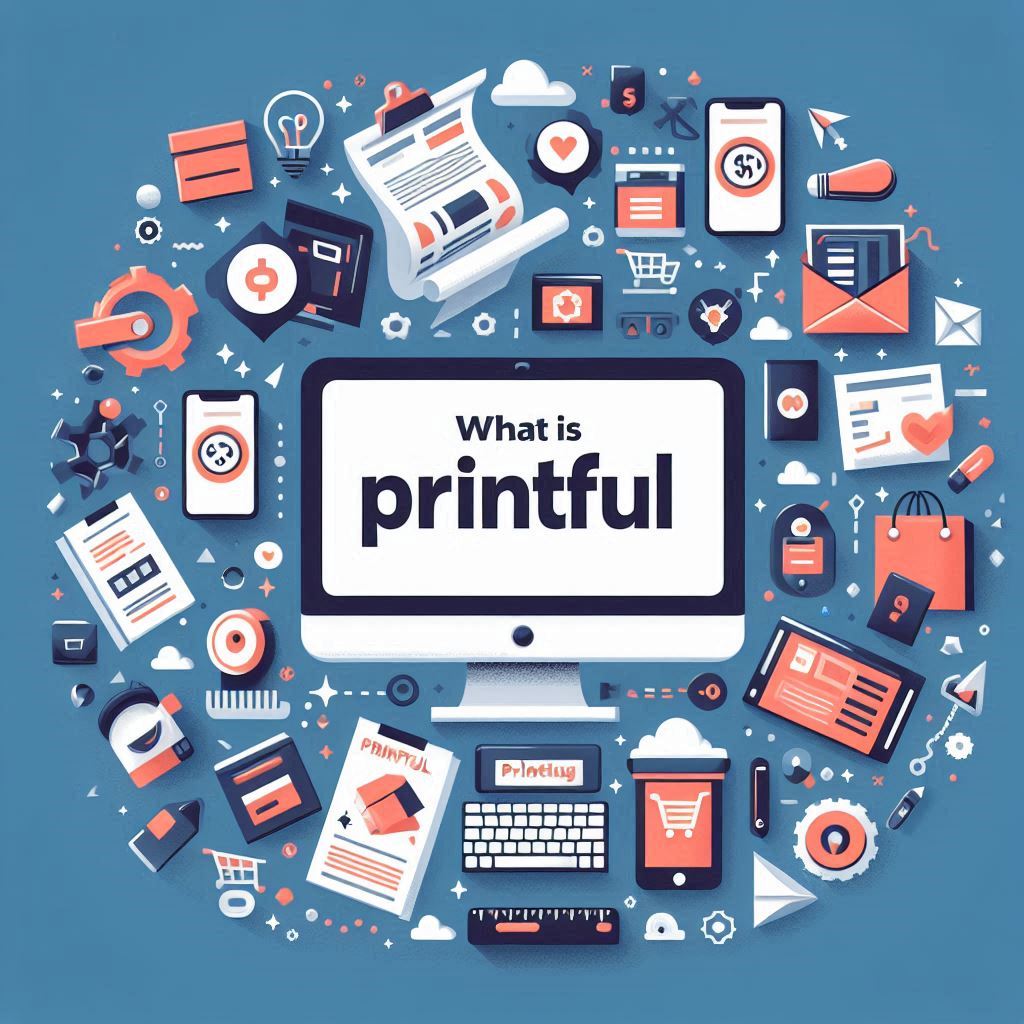Are you dreaming of launching your own online business and selling unique, custom-designed products? Perhaps you’ve heard of “print-on-demand” and are curious about how it works, especially for beginners with limited experience. If so, you’re in the right place! This blog post will guide you through the ins and outs of Printful, a popular print-on-demand service that’s empowering entrepreneurs to bring their creative visions to life.
Table of Contents
- What is Printful?
- How Does Printful Work? (A Step-by-Step Guide)
- Designing for Printful (Tips for Beginners)
- Printful FAQs
What is Printful?
Printful is a print-on-demand (POD) dropshipping service that allows you to create and sell custom products without handling any inventory or managing production processes. This innovative approach to online retail eliminates the need to purchase bulk stock upfront, store it, or deal with shipping logistics.
Print-on-demand means that products are only printed and manufactured when a customer places an order. This model offers several benefits, particularly for new entrepreneurs:
- No upfront inventory costs: You only pay for products when they are actually sold, significantly reducing financial risk.
- Wide range of customizable products: Printful offers a vast catalog of items you can personalize, from classic t-shirts and mugs to phone cases, wall art, and even apparel items like leggings and swimwear.
- User-friendly design tools: Even if you don’t have advanced design skills, Printful provides intuitive tools and mockups to help you visualize your creations.
- Automated order fulfillment: Printful takes care of everything from printing and packaging to shipping the finished product directly to your customer.
How Does Printful Work? (A Step-by-Step Guide)
Let’s break down the Printful process into easy-to-understand steps:
1. Create Your Free Printful Account: Getting started with Printful is as simple as visiting their website and signing up for a free account. No monthly fees or subscriptions are required—you only pay for products when a customer makes a purchase.
2. Connect Your Online Store: Printful seamlessly integrates with popular e-commerce platforms like Shopify, Etsy, WooCommerce, and many others. Connecting your store allows for automatic order transfer and syncing of product listings. The process typically involves installing a Printful app or plugin and following a few simple steps to link your accounts.
3. Explore Printful’s Product Catalog: Browse through Printful’s extensive product catalog and choose the items you want to customize and sell. Experiment with different product categories to find what aligns with your brand and target audience.
4. Design Your Products: You have several options for creating your product designs:
* Upload your own designs: If you’re a graphic designer or have your own artwork, you can upload it directly to Printful.
* Use Printful’s Design Maker: This built-in tool offers a library of clipart, fonts, and design templates to get you started.
* Hire a designer: If you need help with design, Printful offers a Designer Directory to connect you with professional freelancers.
5. Set Your Prices: Printful provides a base price for each product, which covers production and fulfillment costs. You add your profit margin on top of this base price to determine the retail price displayed in your online store. Consider factors like market competition, your target audience, and desired profit margins when setting prices.
6. Publish Your Products to Your Store: Once your products are designed and priced, Printful will sync them with your connected online store. This means your custom products will appear as listings in your shop, ready for customers to purchase.
7. A Customer Makes a Purchase: This is where the magic of automated fulfillment begins. When a customer buys a print-on-demand product from your store, the order is automatically sent to Printful.
8. Printful Produces and Fulfills the Order: Printful’s expert team takes over, printing your design onto the chosen product, packaging it carefully, and preparing it for shipment.
9. Printful Ships the Order to Your Customer: Printful ships the order directly to your customer. You’ll receive tracking information so you can keep your customer informed about the estimated delivery time.
10. You Earn a Profit!: Sit back and enjoy the rewards of your creativity and entrepreneurial spirit! When the order is complete, you receive your profit—the difference between your retail price and Printful’s base price.
Designing for Printful (Tips for Beginners)
To ensure your designs look their best when printed, keep these tips in mind:
- File formats: Printful typically accepts designs in PNG, JPG, and PDF formats. For the best print quality, use high-resolution images with a minimum of 300 DPI (dots per inch).
- Print areas: Pay attention to Printful’s print area guidelines for each product. These define the boundaries of where your design will be printed. Ensure your artwork fits within these limits to avoid cropping or unexpected results.
- Printing methods: Printful uses various printing techniques, including Direct-to-Garment (DTG) printing, sublimation, and embroidery. Each method has its own color characteristics. Familiarize yourself with these to make informed design choices for accurate color reproduction.
Printful FAQs
- Why does Printful sometimes ask if I’m human? Like many websites, Printful employs security measures to prevent bots and automated scripts from accessing its platform. This might involve a simple CAPTCHA (Completely Automated Public Turing test to tell Computers and Humans Apart) or other verification techniques to ensure real users are interacting with the site.
- Does Printful use cookies? Yes, Printful uses cookies to enhance website functionality, improve user experience, and gather data for analytics purposes. Cookies are small text files that websites store on your computer to remember your preferences and track website usage.
- Is my personal and financial information safe with Printful? Printful takes data security and privacy seriously. They follow industry-standard security practices and have policies in place to protect your information. You can review their privacy policy on their website for more details about their data handling practices.

